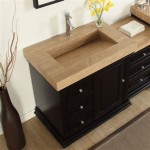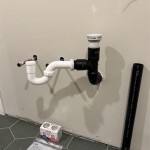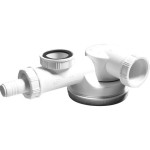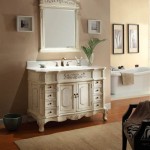Recessed Lights Over Bathroom Vanity
Recessed lighting, also known as can lights, offers a sleek and modern lighting solution for bathroom vanities. Their minimalist design integrates seamlessly into the ceiling, providing focused and efficient illumination for grooming tasks. When strategically placed and properly installed, recessed lights can enhance both the functionality and aesthetics of a bathroom.
Placement is paramount for effective vanity lighting. Lights should be positioned to minimize shadows on the face. A common practice is to install two lights flanking the mirror, roughly 30-36 inches apart and centered above the mirror. The exact spacing will depend on the size of the mirror and vanity. Avoid placing lights directly above the head, as this can create unflattering shadows.
Choosing the correct color temperature is crucial for achieving desired lighting effects. Color temperature is measured in Kelvin (K). For bathroom vanities, a color temperature between 3000K and 4000K is generally recommended. This range provides a warm, inviting light suitable for makeup application and other grooming activities. Higher color temperatures (5000K and above) can appear too cool and clinical for a bathroom setting.
Lumen output, measured in lumens, determines the brightness of the light. For a standard bathroom vanity, a total output of 1500-2000 lumens is usually sufficient. This can be achieved with multiple lower-lumen fixtures or fewer higher-lumen fixtures. The required lumen output can vary based on the size of the bathroom and personal preference.
Different types of recessed lighting fixtures are available for bathroom applications. The most common types include standard recessed lights, shower-rated recessed lights, and airtight recessed lights. Standard recessed lights are suitable for general bathroom use in areas outside the shower or bath. Shower-rated recessed lights are designed to withstand moisture and humidity, making them appropriate for installation directly above the shower or bathtub. Airtight recessed lights prevent airflow through the fixture, improving energy efficiency by reducing drafts and heat loss.
Consider the International Protection (IP) rating when selecting recessed lights for the bathroom. The IP rating indicates the level of protection against dust and moisture. Fixtures installed in areas exposed to water spray, such as above the shower, require a higher IP rating than fixtures installed in drier areas of the bathroom. Look for fixtures with an IP rating of at least IP44 for shower areas and IP23 for other bathroom zones.
Proper installation is essential for the safety and performance of recessed lights. If not comfortable working with electrical wiring, it is recommended to hire a qualified electrician for installation. The installation process typically involves cutting holes in the ceiling, running wiring to the fixture locations, and connecting the fixtures to the electrical supply. Building codes and regulations regarding recessed lighting installation vary by location, so it's vital to ensure compliance with local requirements.
Trim options for recessed lights offer a way to customize the appearance of the fixtures and complement the overall bathroom design. Various trim styles are available, including baffle trims, reflector trims, and adjustable eyeball trims. Baffle trims have ridged edges that help reduce glare. Reflector trims enhance light output and direct the light downwards. Adjustable eyeball trims allow for directional lighting, making them useful for highlighting specific areas of the vanity.
Integrating recessed lighting with other light sources in the bathroom can create a layered and balanced lighting scheme. Combining recessed lights with wall sconces, vanity lights, or pendant lights can provide different levels of illumination for various tasks and enhance the overall ambiance of the space. Consider the placement and style of each light fixture to create a cohesive and functional lighting design.
Dimmers provide control over the brightness of recessed lights, allowing users to adjust the lighting to suit different needs and moods. Installing dimmers for bathroom vanity lights can create a relaxing atmosphere for evening baths or provide brighter light for morning grooming. Compatible dimmers should be used with dimmable LED recessed lights to ensure proper functionality and avoid flickering.
LED (Light Emitting Diode) recessed lights offer several advantages over traditional incandescent or halogen lights. LEDs are significantly more energy-efficient, consuming up to 80% less energy than traditional bulbs. They also have a much longer lifespan, reducing the frequency of bulb replacements. LEDs are available in a wide range of color temperatures, allowing for greater flexibility in achieving the desired lighting effect.
Maintenance of recessed lights is relatively simple. Regularly cleaning the fixtures and replacing the bulbs (when necessary) will help maintain optimal performance and prolong the lifespan of the lights. When cleaning, ensure the power is turned off to avoid electrical shock. Use a soft cloth to wipe away dust and debris from the trim and lens.

Bathroom Recessed Lighting Tips 1stoplighting

The Pocket Guide To Bathroom Lighting Flip Switch

Things To Know About Bathroom Recessed Lighting Design Options Darbylanefurniture Com Light Fixtures Ceiling

Bathroom Light Fixtures Ideas Recessed Lighting Vanity Design Modern

Vanity Lighting Ideas Flip The Switch

The Pocket Guide To Bathroom Lighting Flip Switch

New Recessed Lighting Dots Dashes Lightology

Bathroom Recessed Lighting Design Ideas

Bathroom Lighting

Vanity Hutch With Recessed Lights Ana White
Related Posts







